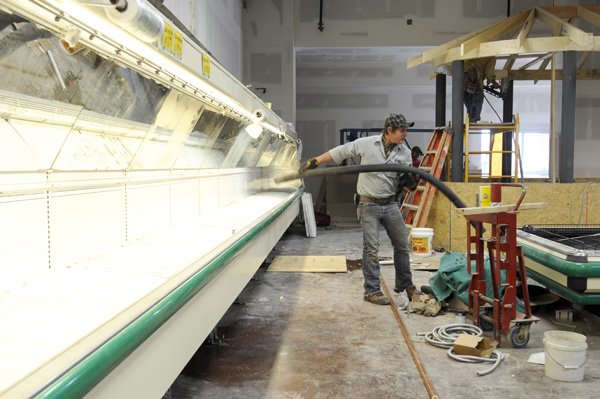NORTHWEST ARKANSAS — Luis Restrepo started teaching at the University of Arkansas in 1995, just as the local Hispanic population began to grow.
“When I came to Fayetteville from Maryland, there was no visible Latino community to speak of,” said Restrepo, a Colombian-American. “But what a difference a decade can make.”
Northwest Arkansas is home to a diverse Hispanic population that includes people whose heritage is Mexican, Cuban, Salvadorian and more. They make up the largest ethnic minority in the region, comprising 13 percent of the population in Benton and Washington counties. Asians, blacks, Pacific Islanders and others add to the region’s growing ethnic and racial diversity.
A three-block stretch along Thompson Avenue, a main artery in Springdale, illustrates how the Hispanic community has developed in Northwest Arkansas. Vibrant red, orange and purple marquees line each side of the street, providing advertising for Hispanic-owned businesses ranging from taqueria restaurants to mechanico auto-repair shops.
Northwest Arkansas has become a small-scale melting pot the way larger cities such as New York and Chicago were decades ago, said Restrepo, a Latin America literature professor and director of the university’s Office of Diversity.
Hispanics began trickling into the area in the mid-1980s often because of job opportunities and family connections, he said. But the transition has not always been smooth for newcomers or longtime residents, Restrepo said.
“There is the obvious language barrier, and many would be relocating from huge urban cities to a somewhat rural area,” he said. “It is one major culture shock no matter what ethnicity.”
Another concern for Restrepo and others is that access to higher education remains challenging for Hispanics.
“With some 34,000 Latino students enrolled in Arkansas public schools, only 861 students at the University of Arkansas are Hispanic,” Restrepo said. “We are making some gradual progress, but there is still a long way to go.”
Restrepo was born in the United States to Colombian parents attending college in Washington, D.C. He grew up in Colombia but returned to the U.S. in the early 1990s as a graduate student. In about 2000, he began to notice Hispanic-owned businesses popping up around Springdale, he said.
“I was so glad to see a Salvadorian store open because they carry some of the food items native to Colombia, like plantains,” he said. “These are not part of the typical Mexican diet. Colombian food is more like Caribbean than Mexican.”
A common mistake people make is to lump to all Hispanics together, said Al Lopez, a Puerto Rican immigrant.
If there is a unifying element, it is the Spanish language, though some terms are used differently across borders, Restrepo said. He remembered needing three attempts to buy shoelaces in Mexico.
“All my life I knew shoelaces as ‘cordones’, but apparently in Mexico they are called ‘agujetas’,” he said.
Ethnic Migration
Hispanics migration to this area came in boomlets but seemed to explode between 2000 or 2001, said Nancy Bolin, director of the Economic Opportunity Agency of Washington County.
She estimated the Hispanic population peaked in late 2007 based on the number of clients the agency was helping with utility assistance and document translation. As the construction industry slowed, a number of migrants left the area to find employment elsewhere, she said. U.S. Census Bureau figures released this month for 2009 show the area’s Hispanic population decreased slightly from 2008.
People who identify themselves as being of Mexican heritage are the largest Hispanic group in the region, census figures show. But Restrepo noted other groups have a presence. Salvadorians are among the fastest growing Hispanic nationalities in the U.S., ranking behind Mexicans and Puerto Ricans and ahead of Cubans, he said. Salvadorian migration to the U.S. increased between 1980 and 1990 as El Salvador was engaged in a civil war, Restrepo said. A majority of the local Salvadorian population probably came through California first, he said.
These larger groups migrated to Northwest Arkansas mostly from large U.S. cities such as Chicago, Los Angeles, Miami and Detroit, Restrepo said. They came because of job opportunities, cheaper costs of living and lower crime rates, he said.
Restrepo estimates between 150 and 200 Colombian families attend the group’s annual July 20 Independence Day picnic in Fayetteville. Like most Hispanic groups, Colombians living here span the socioeconomic scale from laborers to business owners, he said.
“We just get together to enjoy music, food and dancing,” Restrepo said. “It’s kind of like going home for a day.”

